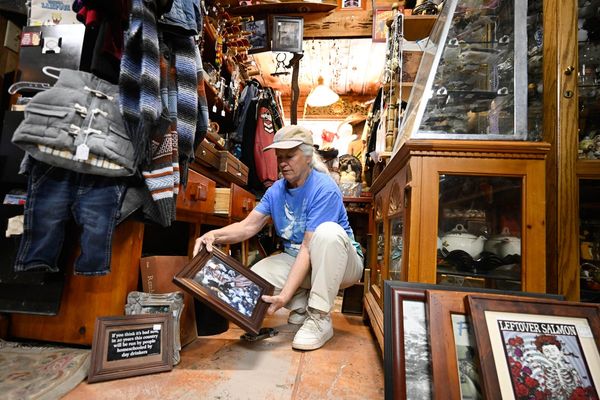Australia's southern coast has 1,500 species of seaweed — the second highest number in the world after Japan — and one Port Lincoln fishing company is harvesting them to make organic products while helping the environment.
In an Australian first, native seaweed is being farmed for liquid fertiliser under a joint SA government and industry research program at Dinko Tuna Farmers finfish aquaculture site in Spencer Gulf.
The seaweed will be made into fertiliser, as well as a pigment worth $US250,000 ($359,000) per kilogram.
The zero-waste process will see the remainder of the solids turned into chicken feed.
The project is also expected to have benefits for nearby tuna, being fattened up in pens for the Japanese sashimi market, as well as other finfish aquaculture such as yellowtail kingfish, by creating cleaner water.
South Australian Research and Development Institute and Dinko Tuna Farmers harvested their first licensed crop of native seaweed in the waters off Port Lincoln in December.
The project stemmed from a desire to tap into the vast seaweed resource and as a way for Dinko Tuna Farmers to utilise the tuna aquaculture site year-round, filling the void after the fish were harvested each winter.
Research that showed there were about 50 to 100 seaweed types naturally growing on mooring anchor ropes for the company's tuna cages, so it was as simple as putting out ropes to encourage wild seaweed growth.
It will be a case of pot luck as to which of the 50 to 100 species will take hold and grow.
In demand
South Australian Primary Industries Minister Clare Scriven said the project had benefits on several levels.
"We know there's a huge demand for seaweed and fish-based fertiliser around the world, in fact it's expected to double by 2031, so this is a big economic opportunity," Ms Scriven said.
"It's also a good environmental opportunity because what this process is doing is actually improving the water quality around aquaculture licences, so this is certainly a win-win."
SARDI Aquaculture leader Sasi Nayar said the seaweed took up nutrients created by tuna farming.
"When you co-cultivate this next to tuna farms or finfish farms there is a significant environmental benefit because it is assimilating all the nitrogen and carbon and phosphorous that is potentially discharged from these farms," Dr Nayar said.
"And it goes towards biomass which can be used for a variety of applications, whether it's for food, whether it's for feed, fertiliser or a whole other raft of opportunities that comes with utilisation of the seaweed biomass."
Dinko Tuna Farmers director Lukina Lukin said employment was also a motivating factor.
Creating jobs
The venture aims to secure permanent staff to overcome the seasonal loss of employees each year after the farmed tuna is harvested.
"At the farm at the moment [there are] only a few lines, and we've already created four jobs so ... we're probably looking at 50 [jobs]," Ms Lukin said.
She hoped to produce commercial quantities of the seaweed fertiliser, and a combination fish waste and seaweed fertiliser, on site in Port Lincoln in the next two years.
"We hope it will be not just socially responsible but it also will be good for our farmed fish because it will have better quality water to grow better and be healthier," Ms Lukin said.
She said the organic pigment, phycoerythrin, extracted from the seaweed was an exciting development.
The product was used in the food and beverage industry but could have applications in the medical and cosmetics industries.
Protein pigment
Dr Nayar said SARDI's phycoerythrin native seaweed project was the only one in Australia.
"Natural pigments have a significant market because with the recent issues where synthetic pigments have been implicated in cancer and other health issues, natural pigments are gaining popularity," Dr Nayar said.
"This particular pigment is a protein so by incorporating that into a food product you're also increasing the nutritional profile of that food product.
"These pigments are highly sought after in the food and beverage industry.
"They can be used to enhance the colouration in, for example, beef and plant-based burgers, frozen desserts, frozen ice creams."
Commercial production of the fertiliser would be developed in Port Lincoln while SARDI was working on the pigment project at its West Beach research facility in Adelaide.







